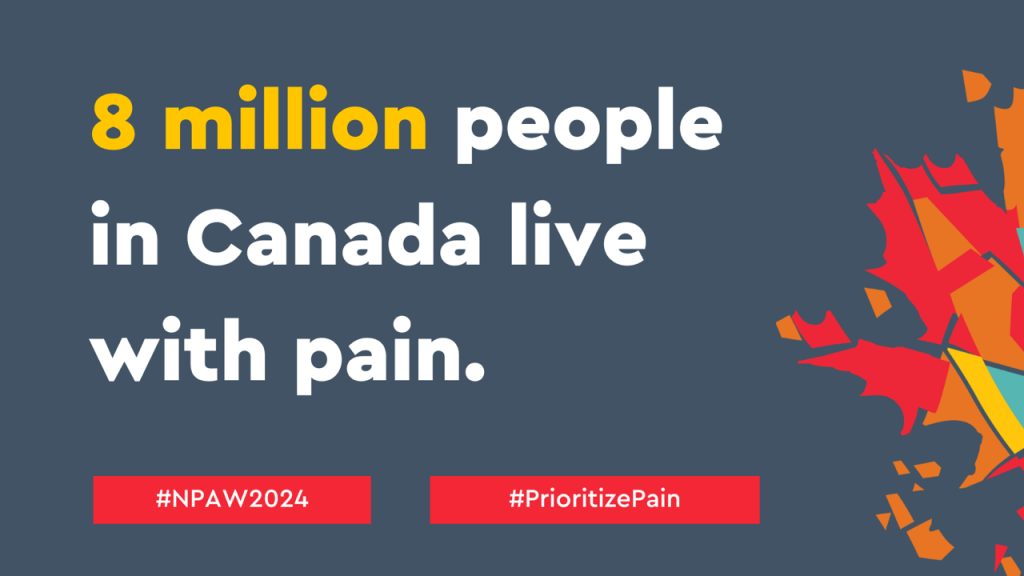
For most people living with arthritis, pain is a daily issue. It can make it difficult to enjoy the things and people we love, and can often feel like a constant companion for people living with disease.
All told, arthritis pain affects tens of millions of people worldwide. According to the World Health Organization, musculoskeletal disorders are the most frequent cause of disability in the modern world, and the prevalence of this group of diseases (there are over 100 different types of arthritis) is rising.
All forms of arthritis are associated with pain, particularly when they are not well managed. Depending on disease type and severity, arthritis pain can range from mild and irritating to excruciating. Arthritis-related pain and disability affect many aspects of life including daily activities, leisure, labour force participation, and social activities. In fact, for people living with arthritis, the number one reason for loss of joint mobility and function is chronic or episodic pain.
What is pain?
The International Association for the Study of Pain defines pain as "an unpleasant sensory and emotional experience associated with actual or potential tissue damage, or described in terms of such damage".
Pain is your body's warning signal, letting you know that something is wrong in your body. When part of your body is injured or damaged, chemical signals are released that travel from nerve system cells (called neurons) to your brain where they are recognized as pain.
Most forms of pain can be divided into two general categories:
- Acute pain - this type of pain is temporary, lasting anywhere from a few seconds to a few hours and waning as your body heals. Some examples of things that cause acute pain include broken bones, cuts, burns or an injury to a joint that is affected by arthritis.
- Chronic pain - this type of pain is long lasting and can range from mild to severe. Often, chronic pain is associated with diseases, such as arthritis, and is not sufficiently relieved when treated because of the permanent damage to the body or nerve endings.
What causes pain?
Arthritis pain varies greatly from person to person. Even your own arthritis pain will vary from day to day. Each individual has a different threshold and tolerance for pain. This threshold can be affected by many things including: emotional and physical factors like stress, depression, anxiety and hypersensitivity at the affected areas, such as knees, hips or hands. The increased sensitivity affects how patients experience pain.
While scientists are not completely sure of why there is so much variation in how people experience their arthritis pain, we know that there are many factors that influence pain. These include:
Physical/ biological factors:
- joint inflammation
- damage to joint tissue caused by the disease process or wear and tear
- muscle strain caused by overworked and overstressed muscles
- fatigue
Emotional and social reasons
- fears about pain
- previous experiences with pain
- your attitude about your disease
- the way people around you react to your pain
- depression
- stress
Managing pain
There are many ways to help control pain, including both short term and long term approaches to pain management. Additionally, some strategies focus on the physical and biological factors that influence pain, while others address emotional and social reasons for pain. Often, using a combination of methods is the best way to control your pain.
While forms of inflammatory arthritis and osteoarthritis may make use of different approaches to treating pain, each utilizes both short-term and long-term strategies. Always speak to your healthcare team to determine what pain management strategies are best suited for you.
Short-term pain management and treatments
- the use of medications to manage pain such as pain relievers
- the use of heat or cold therapy
- the use of splint or a brace to allow joints to rest and protect joints from further injury
- massage therapy
- receiving transcutaneous electrical nerve stimulation (TENS) in areas that are experiencing pain
Long-term pain management and treatments
- medications such as corticosteroids, opioids, nonsteroidal anti-inflammatory drugs, disease-modifying anti-rheumatic drugs, and biologics
- weight loss (excess weight puts stress on joints such as knees or hips)
- participate in exercises such as swimming, walking, low-impact aerobic exercise, stretching, and range of motion exercises to reduce joint pain and stiffness
- surgery to replace damaged or painful joints
- cognitive behavioural therapy and coping skills training
Click here for the Talk to Your Doctor about Your Joint Pain handout.
To learn more about the resources provided by Pain Canada, click here.